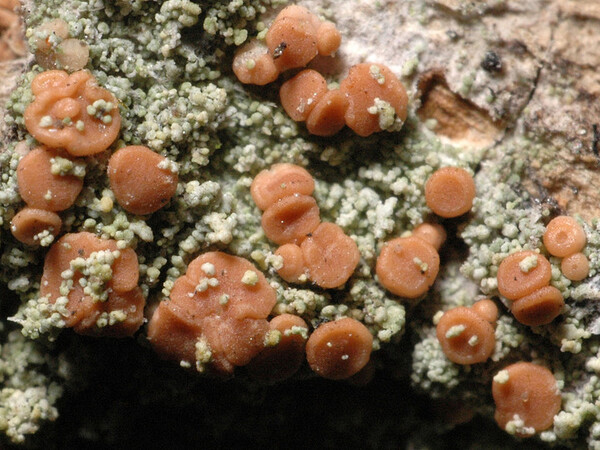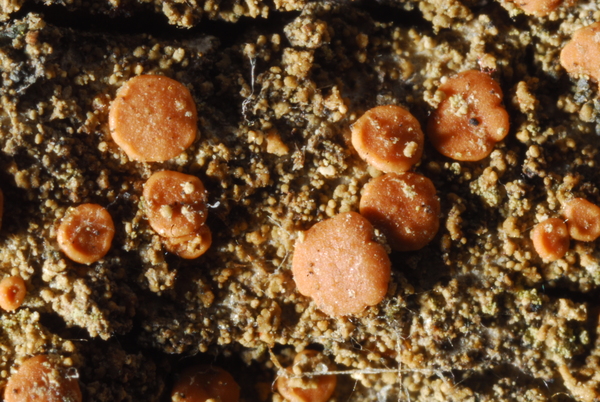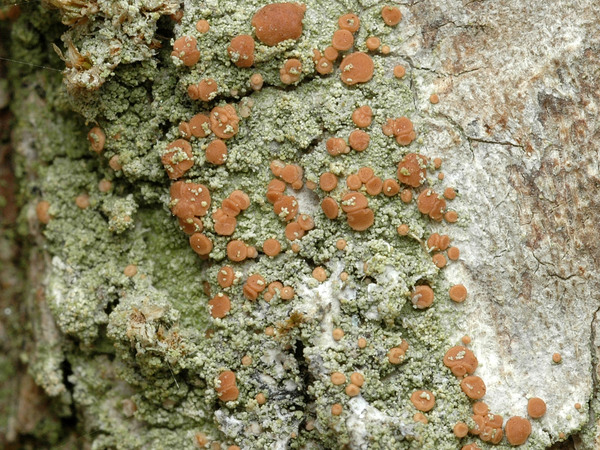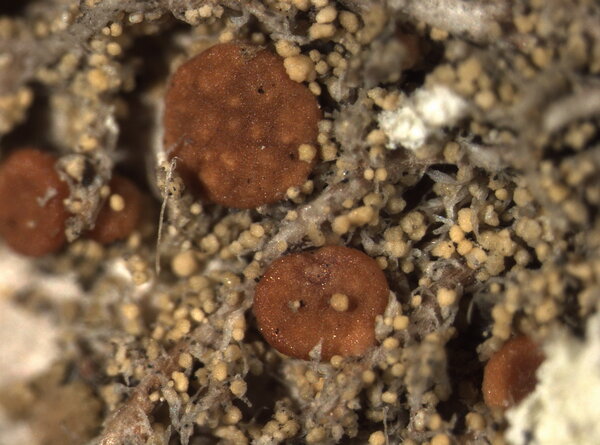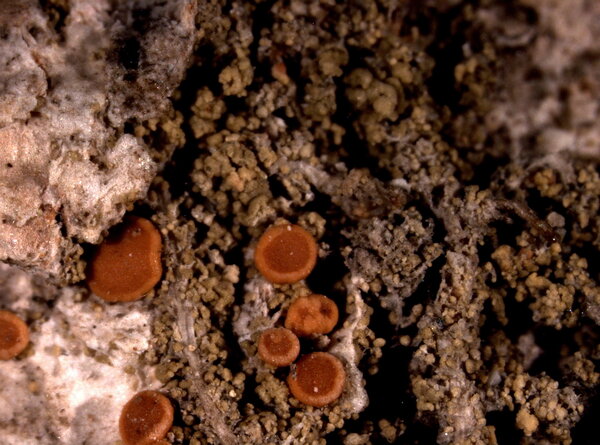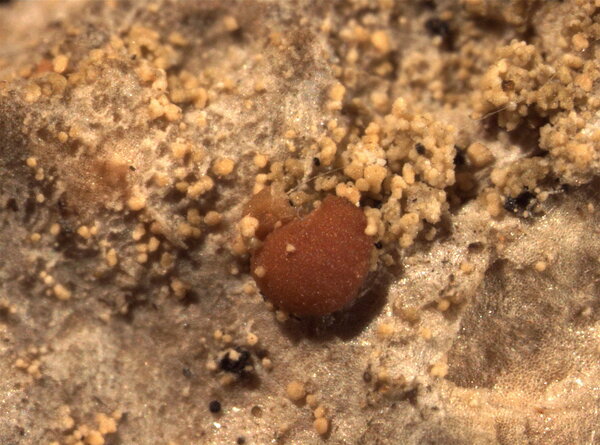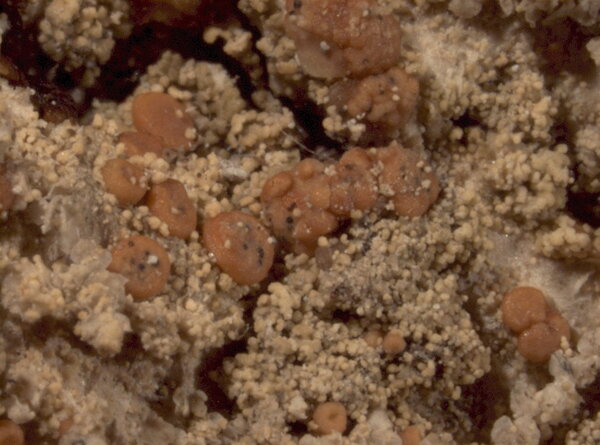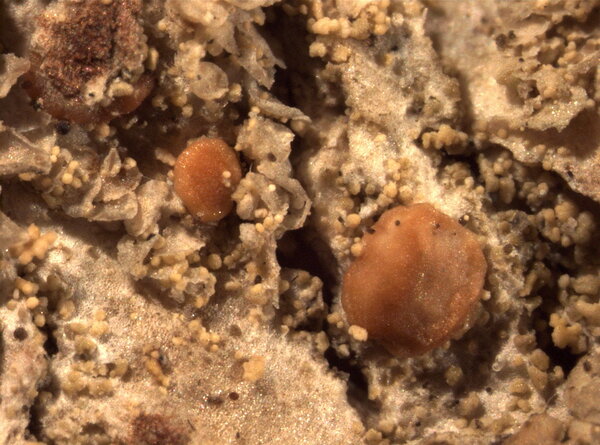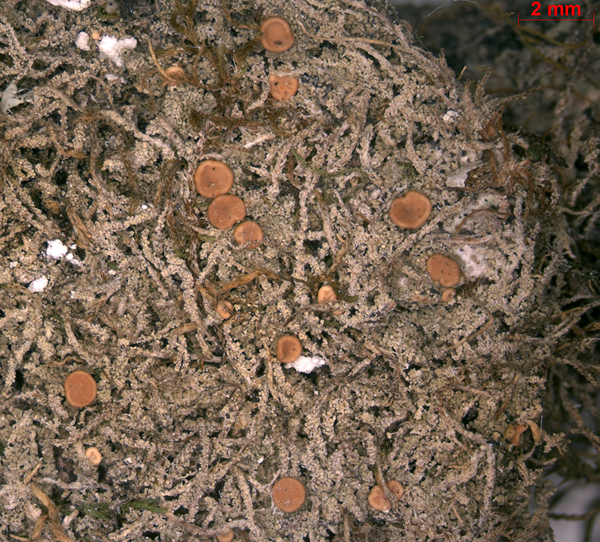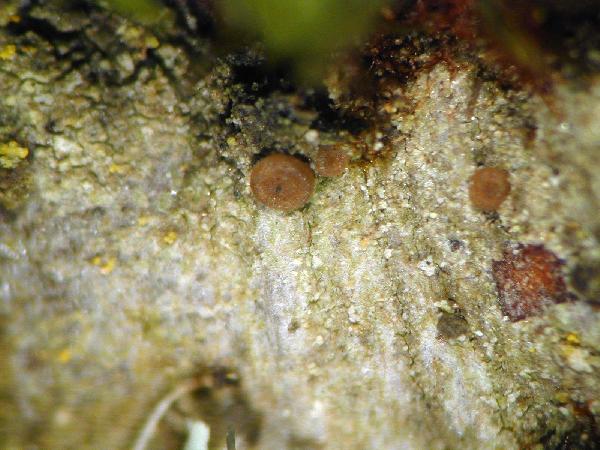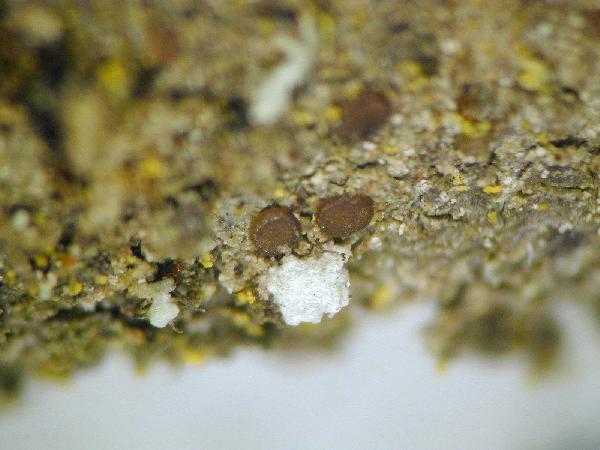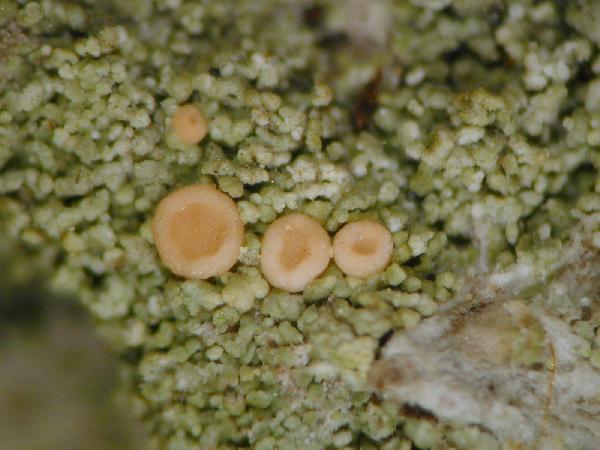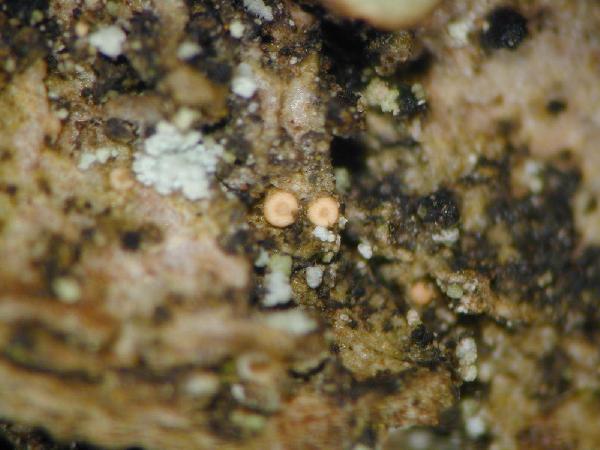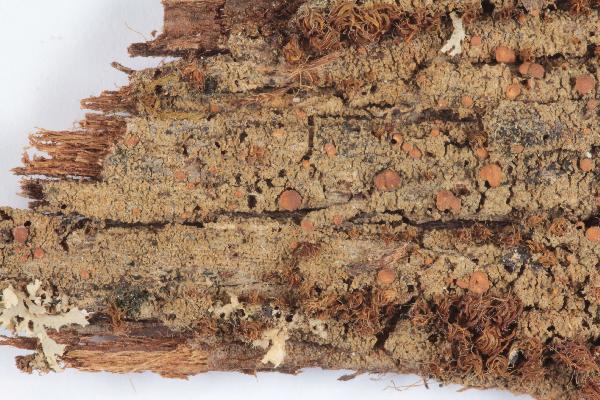Bacidia rubella (Hoffm.) A. Massal.
Ric. Auton. Lich. Crost.: 118, 1852. Basionym: Verrucaria rubella Hoffm. - Deutschl. Fl., 2: 174, 1796.
Synonyms: Bacidia luteola auct.; Bacidia rubella var. luteola (Schrad.) Th. Fr.; Bacidia rubella var. porriginosa (Turner) H. Olivier; Bacidia rubella var. vulgaris (Schaer.) Körb.; Biatora luteola auct.; Lichen luteolus Schrad. nom. illegit.
Distribution: N - VG (Tretiach & Carvalho 1995, Castello 1996, Carvalho 1997), Frl, Ven, TAA (Stofer 2006, Nascimbene & al. 2007b, 2022, Nimis & al. 2015), Lomb (Valcuvia & Truzzi 2007b, Gheza & al. 2023), Piem (Isocrono & al. 2004, Giordani & Malaspina 2016), Emil (Bassi 1995, Gasparo & Tretiach 1996, Nimis & al. 1996, Benesperi 2009, Fariselli & al. 2020), Lig (Brunialti & al. 1999, Giordani & Incerti 2008, Giordani & al. 2025). C - Tosc (Tretiach & Nimis 1994, Loppi & Putortì 1995, Loppi & al. 1995, 1997, 1998, 1998b, 2002c, Loppi 1996, Putortì & al. 1998, Putortì & Loppi 1999b, Loppi & Frati 2006, Benesperi & al. 2007, Bacci & al. 2000, Brunialti & Frati 2010, Loppi & Nascimbene 2010, Benesperi 2011, Benesperi & al. 2013, Frati & Brunialti 2023), Umb (Ravera 1998, Ravera & al. 2006, Brackel 2015), Marc (Nimis & Tretiach 1999, Frati & Brunialti 2006, Brackel 2015), Laz (Nimis & Tretiach 2004, Ravera 2002, Massari & Ravera 2002, Ruisi & al. 2005, Munzi & al. 2007, Ravera & Genovesi 2008, Zucconi & al. 2013, Brackel 2015), Abr (Recchia & al. 1993, Olivieri & Pacioni 1996, Olivieri & al. 1997, 1997b, Loppi & al. 1999, Nimis & Tretiach 1999, Stofer 2006, Brackel 2015, Caporale & al. 2016, Corona & al. 2016, Gheza & al. 2021), Mol (Nimis & Tretiach 1999, Caporale & al. 2008, Paoli & al. 2015, Caporale & Ravera 2020), Sar (Zedda & al. 2001, Zedda 2002, Stofer 2006, Rizzi & al. 2011, Di Nuzzo & al. 2022). S - Camp (Aprile & al. 2003b, Catalano & al. 2012, 2016), Pugl (Nimis & Tretiach 1999, Brackel 2011, Brackel & Puntillo 2023), Bas (Nimis & Tretiach 1999), Cal (Puntillo 1996, Puntillo & Puntillo 2004, Incerti & Nimis 2006, Lich. Ital. Exs. 78: Isocrono & al. 2023), Si (Nimis & al. 1994, Ottonello & Salone 1994, Ottonello & al. 1994, Grillo & Cristaudo 1995, Ottonello 1996, Grillo & al. 1996, 2007, Grillo 1998, Grillo & Caniglia 2004, 2006, Caniglia & Grillo 2006b, Brackel 2008b, Liistro & Cataldo 2011, Campisi & al. 2020).
Description: Thallus crustose, green to grey-green, at first smooth, then covered in up to 0.3 mm wide, isidia-like, subglobose, (50-)60-120(-130) µm wide granules granules. Cortex 4-8 μm thick, colourless, with many crystals soluble in K. Apothecia lecideine, orange brown to reddish brown, sessile, (0.4-)0.5-1(-1.5) mm across, with a flat, epruinose disc and a rather thick, smooth, sometimes whitish-pruinose proper margin which may be almost excluded in old apothecia. Proper exciple colourless to pale orange-brown in upper part, of radiating hyphae; epithecium pale orange-brown, K-; hymenium colourless, (69-)80-90(-105) µm high, K/I+ blue; paraphyses simple or forked in upper part, 1–1.5 µm thick at mid-level, the apical cells slightly swollen, up to 2.5 µm wide; hypothecium colourless in lower part, more or less straw-coloured in upper part. Asci 8-spored, clavate to cylindrical-clavate, the apical dome K/I+ dark blue with a pale, conical-pointed apical cushion (axial mass), the wall K/I-, but the thin outer gel K/I+ blue, Bacidia-type. Ascospores 3-9(-13)-septate, hyaline, needle-like, (35-)45-70(-80) x 2.4-3.5(-4.2) µm. Pycnidia immersed, pale orange to orange-brown near the ostiole, multilocular. Conidia thread-like, curved, simple, (10-)15-24 x 0.6-0.8 µm. Photobiont chlorococcoid, the cells 5-17 µm wide. Spot tests: K-, C-, KC-, P-, UV-. Chemistry: thallus without lichen substances; apothecia with the Rubella-orange pigment.Note: a temperate lichen found on old trees, especially oaks, still widespread, but probably declining, almost extinct in the Po-plain, with optimum in the submediterranean belt.
Growth form: Crustose
Substrata: bark
Photobiont: green algae other than Trentepohlia
Reproductive strategy: mainly sexual
Commonnes-rarity: (info)
Alpine belt: absent
Subalpine belt: absent
Oromediterranean belt: absent
Montane belt: extremely rare
Submediterranean belt: rare
Padanian area: extremely rare
Humid submediterranean belt: rather rare
Humid mediterranean belt: very rare
Dry mediterranean belt: absent

Predictive model
Herbarium samples
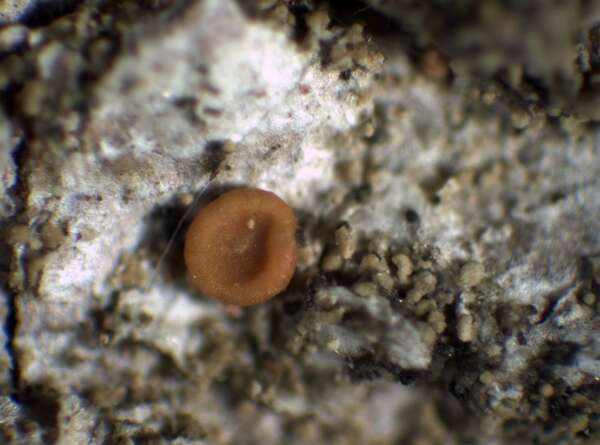

P.L. Nimis; Owner: Department of Life Sciences, University of Trieste
Herbarium: TSB (5246)
2001/11/22
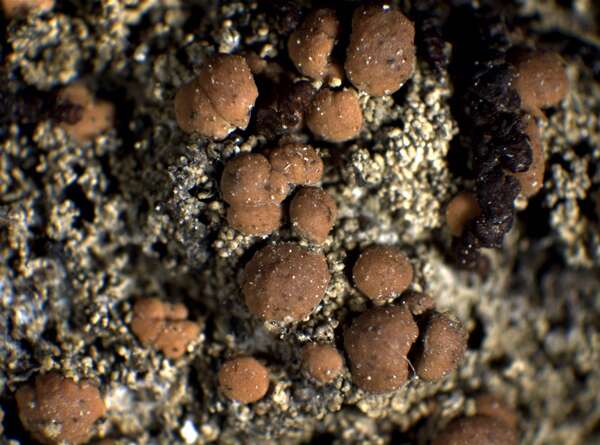

P.L. Nimis; Owner: Department of Life Sciences, University of Trieste
Herbarium: TSB (13724)
2001/11/22
old, convex, immarginate apothecia
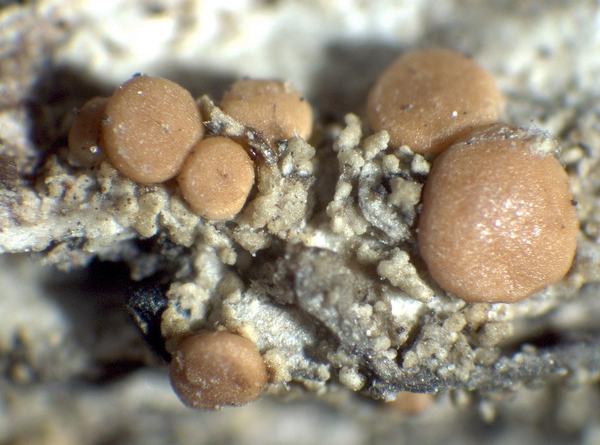

P.L.Nimis; Owner: Department of Life Sciences, University of Trieste
Herbarium: TSB (30807)
2008.03.03
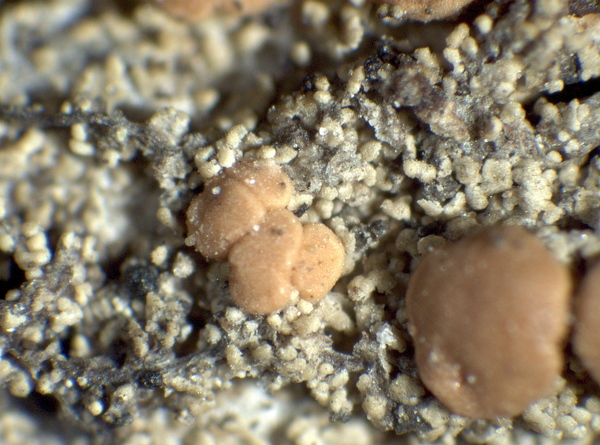

P.L.Nimis; Owner: Department of Life Sciences, University of Trieste
Herbarium: TSB (30807)
2008.03.03
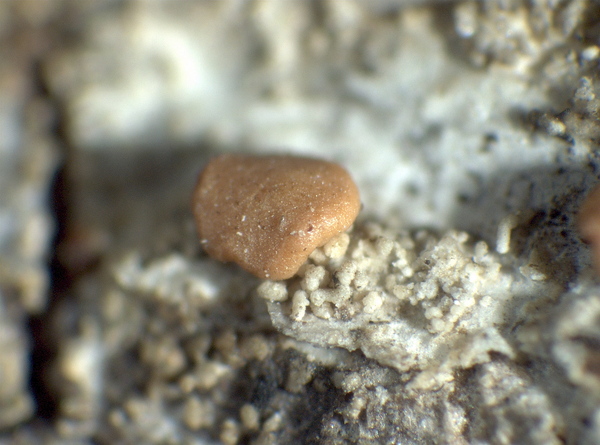

P.L.Nimis; Owner: Department of Life Sciences, University of Trieste
Herbarium: TSB (30807)
2008.03.03
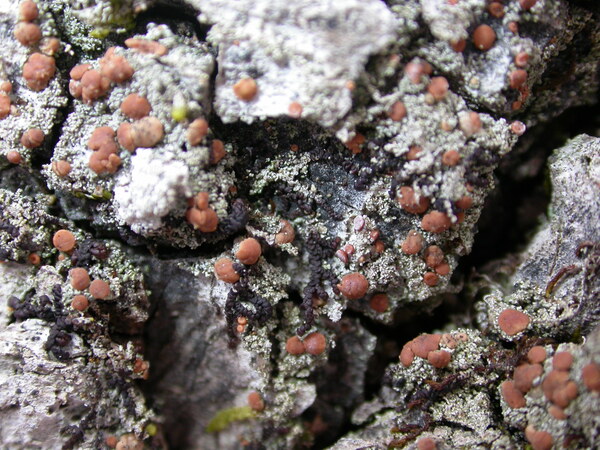

Juri Nascimbene; Owner: Department of Life Sciences, University of Trieste
Italy, Trentino-Alto Adige, Trento, Villa Welsperg, Centro Visitatori del Parco di Paneveggio; altitude: 1030 m
03.04.2009
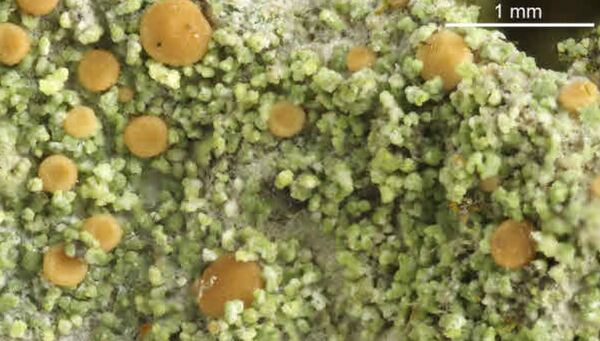

Felix Schumm – CC BY-SA 4.0
[16466], Germany, Baden-Württemberg, Kreis Göppingen, bei der Ruine Helfenstein oberhalb Geislingen, an Laubbaum im Wald, 48.61613° N, 9.85064° E, 644 m. Leg. Schumm 15.04.2010, det. Schumm 2010.


Felix Schumm – CC BY-SA 4.0
[16466], Germany, Baden-Württemberg, Kreis Göppingen, bei der Ruine Helfenstein oberhalb Geislingen, an Laubbaum im Wald, 48.61613° N, 9.85064° E, 644 m. Leg. Schumm 15.04.2010, det. Schumm 2010.
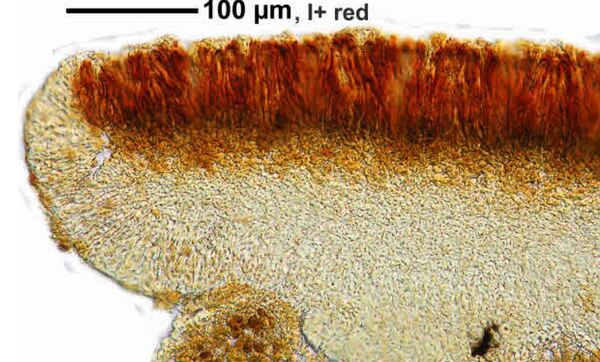

Felix Schumm – CC BY-SA 4.0
[16466], Germany, Baden-Württemberg, Kreis Göppingen, bei der Ruine Helfenstein oberhalb Geislingen, an Laubbaum im Wald, 48.61613° N, 9.85064° E, 644 m. Leg. Schumm 15.04.2010, det. Schumm 2010.


Felix Schumm – CC BY-SA 4.0
[16466], Germany, Baden-Württemberg, Kreis Göppingen, bei der Ruine Helfenstein oberhalb Geislingen, an Laubbaum im Wald, 48.61613° N, 9.85064° E, 644 m. Leg. Schumm 15.04.2010, det. Schumm 2010.
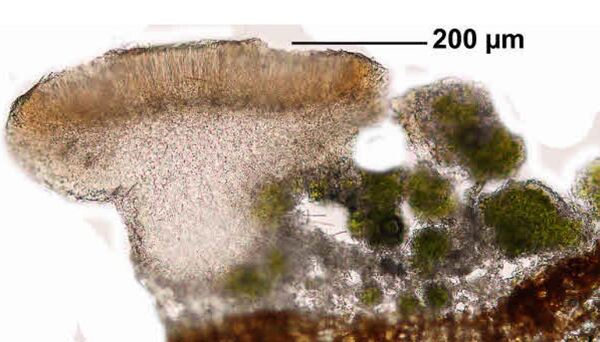

Felix Schumm – CC BY-SA 4.0
[16466], Germany, Baden-Württemberg, Kreis Göppingen, bei der Ruine Helfenstein oberhalb Geislingen, an Laubbaum im Wald, 48.61613° N, 9.85064° E, 644 m. Leg. Schumm 15.04.2010, det. Schumm 2010.
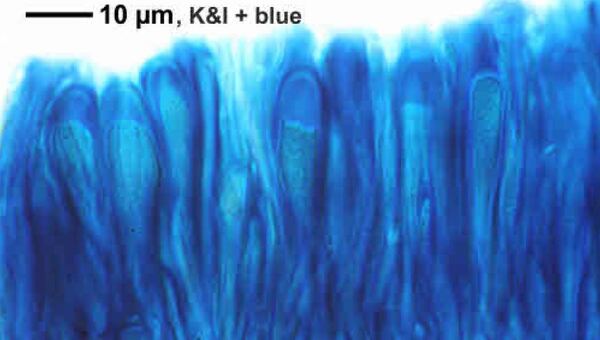

Felix Schumm – CC BY-SA 4.0
[16466], Germany, Baden-Württemberg, Kreis Göppingen, bei der Ruine Helfenstein oberhalb Geislingen, an Laubbaum im Wald, 48.61613° N, 9.85064° E, 644 m. Leg. Schumm 15.04.2010, det. Schumm 2010.


Felix Schumm – CC BY-SA 4.0
[16466], Germany, Baden-Württemberg, Kreis Göppingen, bei der Ruine Helfenstein oberhalb Geislingen, an Laubbaum im Wald, 48.61613° N, 9.85064° E, 644 m. Leg. Schumm 15.04.2010, det. Schumm 2010.


Felix Schumm – CC BY-SA 4.0
[16466], Germany, Baden-Württemberg, Kreis Göppingen, bei der Ruine Helfenstein oberhalb Geislingen, an Laubbaum im Wald, 48.61613° N, 9.85064° E, 644 m. Leg. Schumm 15.04.2010, det. Schumm 2010.
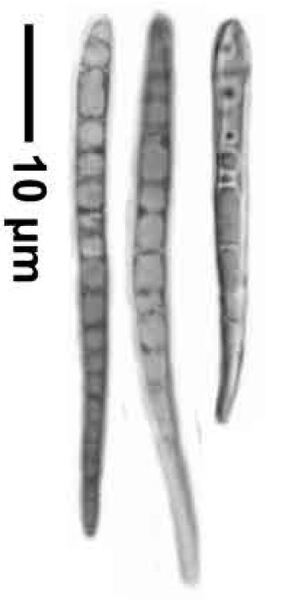

Felix Schumm – CC BY-SA 4.0
[16466], Germany, Baden-Württemberg, Kreis Göppingen, bei der Ruine Helfenstein oberhalb Geislingen, an Laubbaum im Wald, 48.61613° N, 9.85064° E, 644 m. Leg. Schumm 15.04.2010, det. Schumm 2010.
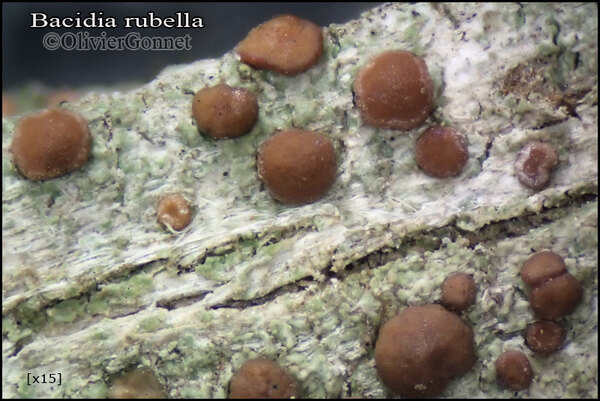
Courtesy: Olivier et Danièle Gonnet - Source: https://www.afl-lichenologie.fr/Photos_AFL/Photos_AFL_B/Bacidia_rubella.htm
France, Sur Juniperus phoenicea - Anse de l'Ile de Fazzio - Corse
2/11/2015
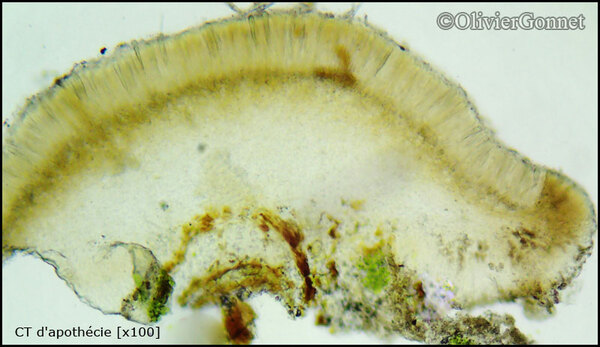
Courtesy: Olivier et Danièle Gonnet - Source: https://www.afl-lichenologie.fr/Photos_AFL/Photos_AFL_B/Bacidia_rubella.htm
France, Sur Juniperus phoenicea - Anse de l'Ile de Fazzio - Corse
2/11/2015
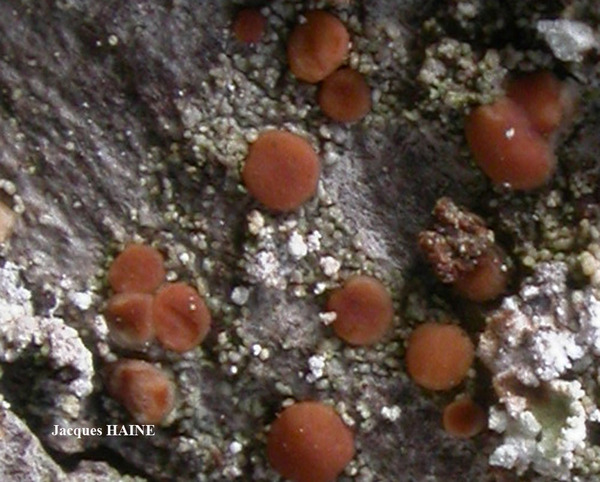
Jacques Haine - Source: http://www.lichensmaritimes.org/index.php?task=fiche&lichen=565&lang=en
France, Ardennes

Jacques Haine - Source: http://www.lichensmaritimes.org/index.php?task=fiche&lichen=565&lang=en
France, Ardennes
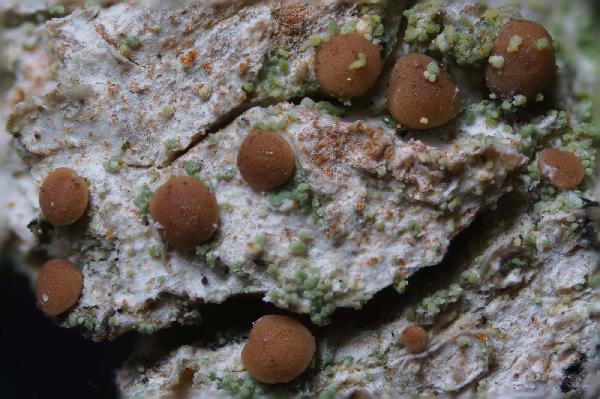
Marta González Garcia - Centro de Estudios Micologicos Asturianos
Casomera (Aller-Asturias), 18-III-2025, en corteza de Fraxinus, MGG-200.
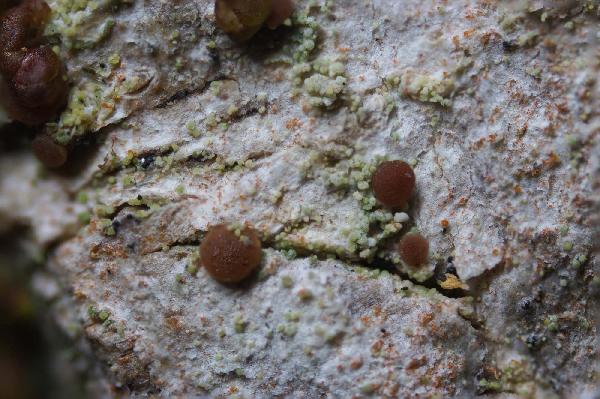
Marta González Garcia - Centro de Estudios Micologicos Asturianos
Casomera (Aller-Asturias), 18-III-2025, en corteza de Fraxinus, MGG-200.

Marta González Garcia - Centro de Estudios Micologicos Asturianos
Casomera (Aller-Asturias), 18-III-2025, en corteza de Fraxinus, MGG-200.

Marta González Garcia - Centro de Estudios Micologicos Asturianos
Casomera (Aller-Asturias), 18-III-2025, en corteza de Fraxinus, MGG-200.
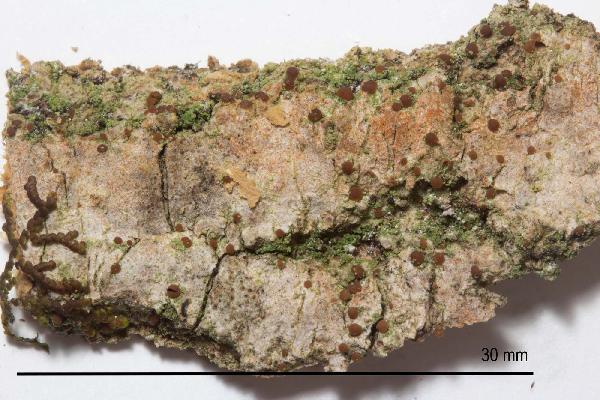
Marta González Garcia - Centro de Estudios Micologicos Asturianos
Casomera (Aller-Asturias), 18-III-2025, en corteza de Fraxinus, MGG-200.

Marta González Garcia - Centro de Estudios Micologicos Asturianos
Casomera (Aller-Asturias), 18-III-2025, en corteza de Fraxinus, MGG-200.
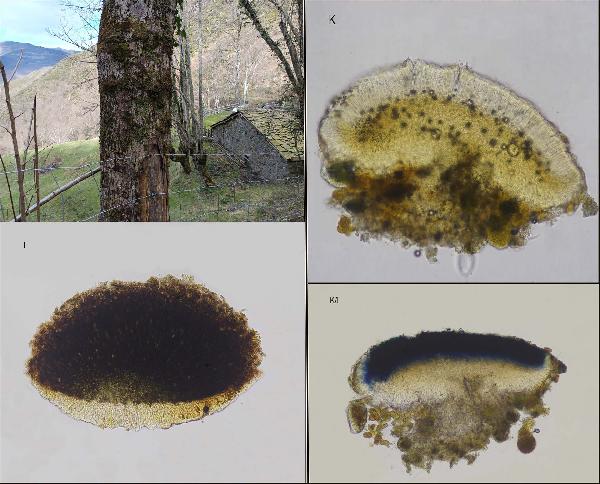
Marta González Garcia - Centro de Estudios Micologicos Asturianos
Casomera (Aller-Asturias), 18-III-2025, en corteza de Fraxinus, MGG-200.
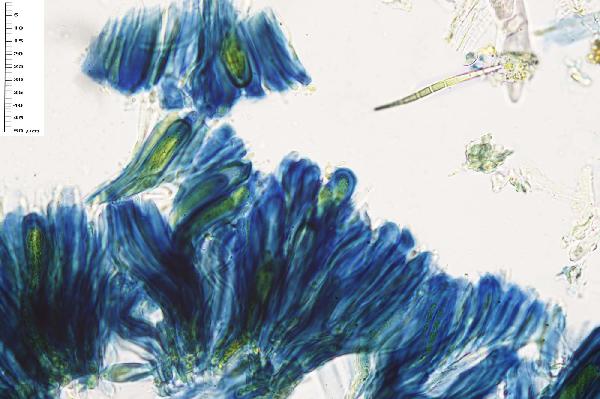
Marta González Garcia - Centro de Estudios Micologicos Asturianos
Casomera (Aller-Asturias), 18-III-2025, en corteza de Fraxinus, MGG-200.

Marta González Garcia - Centro de Estudios Micologicos Asturianos
Casomera (Aller-Asturias), 18-III-2025, en corteza de Fraxinus, MGG-200.
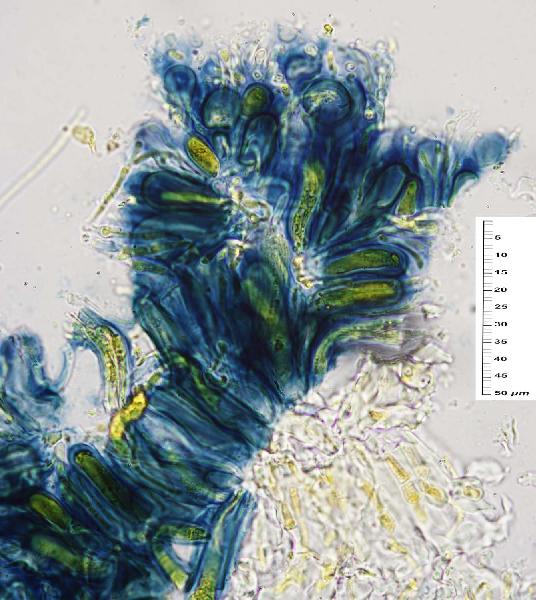
Marta González Garcia - Centro de Estudios Micologicos Asturianos
Casomera (Aller-Asturias), 18-III-2025, en corteza de Fraxinus, MGG-200.
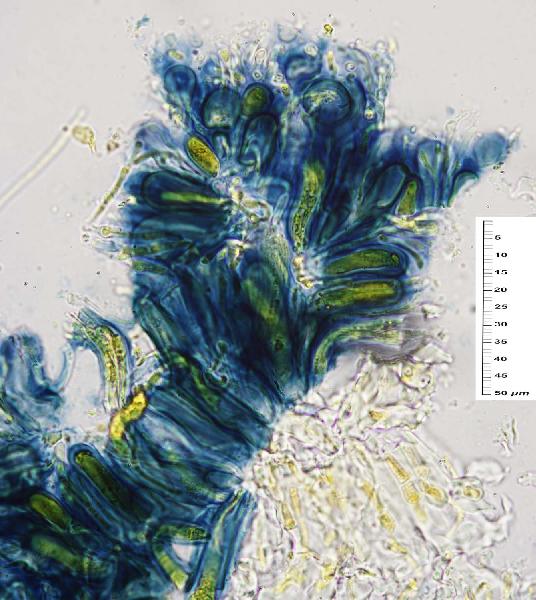
Marta González Garcia - Centro de Estudios Micologicos Asturianos
Casomera (Aller-Asturias), 18-III-2025, en corteza de Fraxinus, MGG-200.
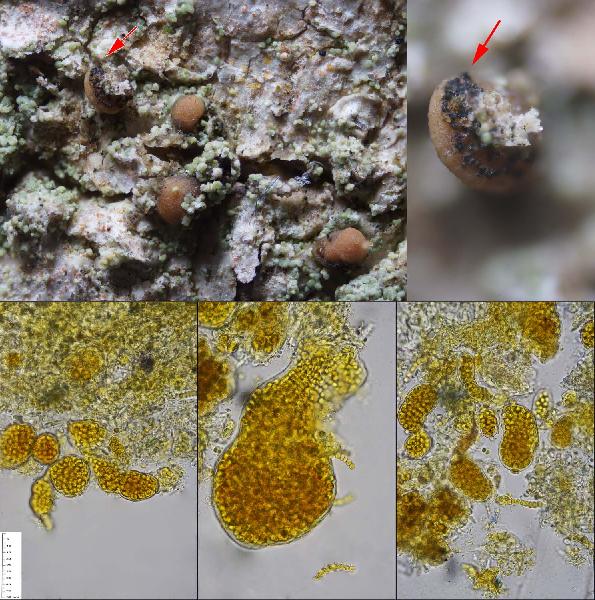
Marta González Garcia - Centro de Estudios Micologicos Asturianos
Casomera (Aller-Asturias), 18-III-2025, en corteza de Fraxinus, MGG-200.
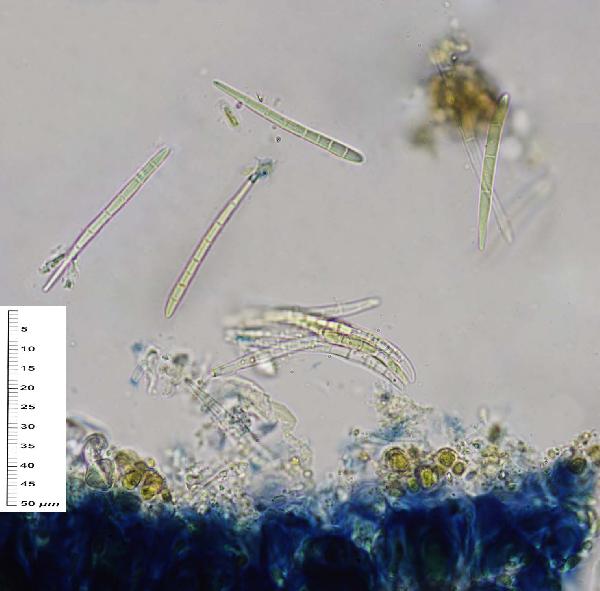
Marta González Garcia - Centro de Estudios Micologicos Asturianos
Casomera (Aller-Asturias), 18-III-2025, en corteza de Fraxinus, MGG-200.
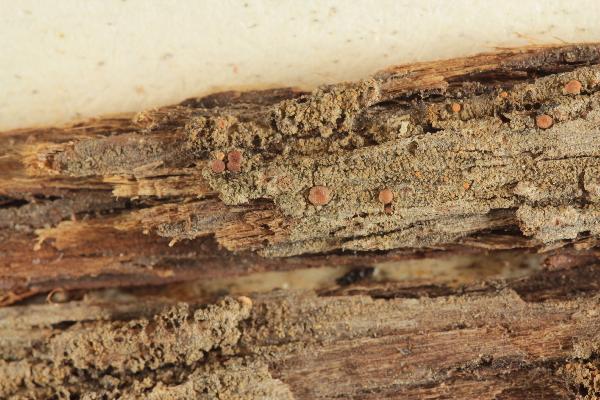
Collezione lichenologica Abramo Massalongo del Museo di Storia Naturale G. Ligabue di Venezia - Autori: Seggi, Linda; Trabucco, Raffaella Proprietà: Fondazione Musei Civici di Venezia - CC BY-NC
Italy, Veneto, in op. Illasi 1855
Growth form: Crustose
Substrata: bark
Photobiont: green algae other than Trentepohlia
Reproductive strategy: mainly sexual
Commonnes-rarity: (info)
Alpine belt: absent
Subalpine belt: absent
Oromediterranean belt: absent
Montane belt: extremely rare
Submediterranean belt: rare
Padanian area: extremely rare
Humid submediterranean belt: rather rare
Humid mediterranean belt: very rare
Dry mediterranean belt: absent

Predictive model
| Herbarium samples |


P.L. Nimis; Owner: Department of Life Sciences, University of Trieste
Herbarium: TSB (5246)
2001/11/22


P.L. Nimis; Owner: Department of Life Sciences, University of Trieste
Herbarium: TSB (13724)
2001/11/22
old, convex, immarginate apothecia


P.L.Nimis; Owner: Department of Life Sciences, University of Trieste
Herbarium: TSB (30807)
2008.03.03


P.L.Nimis; Owner: Department of Life Sciences, University of Trieste
Herbarium: TSB (30807)
2008.03.03


P.L.Nimis; Owner: Department of Life Sciences, University of Trieste
Herbarium: TSB (30807)
2008.03.03


Juri Nascimbene; Owner: Department of Life Sciences, University of Trieste
Italy, Trentino-Alto Adige, Trento, Villa Welsperg, Centro Visitatori del Parco di Paneveggio; altitude: 1030 m
03.04.2009


Felix Schumm – CC BY-SA 4.0
[16466], Germany, Baden-Württemberg, Kreis Göppingen, bei der Ruine Helfenstein oberhalb Geislingen, an Laubbaum im Wald, 48.61613° N, 9.85064° E, 644 m. Leg. Schumm 15.04.2010, det. Schumm 2010.


Felix Schumm – CC BY-SA 4.0
[16466], Germany, Baden-Württemberg, Kreis Göppingen, bei der Ruine Helfenstein oberhalb Geislingen, an Laubbaum im Wald, 48.61613° N, 9.85064° E, 644 m. Leg. Schumm 15.04.2010, det. Schumm 2010.


Felix Schumm – CC BY-SA 4.0
[16466], Germany, Baden-Württemberg, Kreis Göppingen, bei der Ruine Helfenstein oberhalb Geislingen, an Laubbaum im Wald, 48.61613° N, 9.85064° E, 644 m. Leg. Schumm 15.04.2010, det. Schumm 2010.


Felix Schumm – CC BY-SA 4.0
[16466], Germany, Baden-Württemberg, Kreis Göppingen, bei der Ruine Helfenstein oberhalb Geislingen, an Laubbaum im Wald, 48.61613° N, 9.85064° E, 644 m. Leg. Schumm 15.04.2010, det. Schumm 2010.


Felix Schumm – CC BY-SA 4.0
[16466], Germany, Baden-Württemberg, Kreis Göppingen, bei der Ruine Helfenstein oberhalb Geislingen, an Laubbaum im Wald, 48.61613° N, 9.85064° E, 644 m. Leg. Schumm 15.04.2010, det. Schumm 2010.


Felix Schumm – CC BY-SA 4.0
[16466], Germany, Baden-Württemberg, Kreis Göppingen, bei der Ruine Helfenstein oberhalb Geislingen, an Laubbaum im Wald, 48.61613° N, 9.85064° E, 644 m. Leg. Schumm 15.04.2010, det. Schumm 2010.


Felix Schumm – CC BY-SA 4.0
[16466], Germany, Baden-Württemberg, Kreis Göppingen, bei der Ruine Helfenstein oberhalb Geislingen, an Laubbaum im Wald, 48.61613° N, 9.85064° E, 644 m. Leg. Schumm 15.04.2010, det. Schumm 2010.


Felix Schumm – CC BY-SA 4.0
[16466], Germany, Baden-Württemberg, Kreis Göppingen, bei der Ruine Helfenstein oberhalb Geislingen, an Laubbaum im Wald, 48.61613° N, 9.85064° E, 644 m. Leg. Schumm 15.04.2010, det. Schumm 2010.


Felix Schumm – CC BY-SA 4.0
[16466], Germany, Baden-Württemberg, Kreis Göppingen, bei der Ruine Helfenstein oberhalb Geislingen, an Laubbaum im Wald, 48.61613° N, 9.85064° E, 644 m. Leg. Schumm 15.04.2010, det. Schumm 2010.

Courtesy: Olivier et Danièle Gonnet - Source: https://www.afl-lichenologie.fr/Photos_AFL/Photos_AFL_B/Bacidia_rubella.htm
France, Sur Juniperus phoenicea - Anse de l'Ile de Fazzio - Corse
2/11/2015

Courtesy: Olivier et Danièle Gonnet - Source: https://www.afl-lichenologie.fr/Photos_AFL/Photos_AFL_B/Bacidia_rubella.htm
France, Sur Juniperus phoenicea - Anse de l'Ile de Fazzio - Corse
2/11/2015

Jacques Haine - Source: http://www.lichensmaritimes.org/index.php?task=fiche&lichen=565&lang=en
France, Ardennes

Jacques Haine - Source: http://www.lichensmaritimes.org/index.php?task=fiche&lichen=565&lang=en
France, Ardennes

Marta González Garcia - Centro de Estudios Micologicos Asturianos
Casomera (Aller-Asturias), 18-III-2025, en corteza de Fraxinus, MGG-200.

Marta González Garcia - Centro de Estudios Micologicos Asturianos
Casomera (Aller-Asturias), 18-III-2025, en corteza de Fraxinus, MGG-200.

Marta González Garcia - Centro de Estudios Micologicos Asturianos
Casomera (Aller-Asturias), 18-III-2025, en corteza de Fraxinus, MGG-200.

Marta González Garcia - Centro de Estudios Micologicos Asturianos
Casomera (Aller-Asturias), 18-III-2025, en corteza de Fraxinus, MGG-200.

Marta González Garcia - Centro de Estudios Micologicos Asturianos
Casomera (Aller-Asturias), 18-III-2025, en corteza de Fraxinus, MGG-200.

Marta González Garcia - Centro de Estudios Micologicos Asturianos
Casomera (Aller-Asturias), 18-III-2025, en corteza de Fraxinus, MGG-200.

Marta González Garcia - Centro de Estudios Micologicos Asturianos
Casomera (Aller-Asturias), 18-III-2025, en corteza de Fraxinus, MGG-200.

Marta González Garcia - Centro de Estudios Micologicos Asturianos
Casomera (Aller-Asturias), 18-III-2025, en corteza de Fraxinus, MGG-200.

Marta González Garcia - Centro de Estudios Micologicos Asturianos
Casomera (Aller-Asturias), 18-III-2025, en corteza de Fraxinus, MGG-200.

Marta González Garcia - Centro de Estudios Micologicos Asturianos
Casomera (Aller-Asturias), 18-III-2025, en corteza de Fraxinus, MGG-200.

Marta González Garcia - Centro de Estudios Micologicos Asturianos
Casomera (Aller-Asturias), 18-III-2025, en corteza de Fraxinus, MGG-200.

Marta González Garcia - Centro de Estudios Micologicos Asturianos
Casomera (Aller-Asturias), 18-III-2025, en corteza de Fraxinus, MGG-200.

Marta González Garcia - Centro de Estudios Micologicos Asturianos
Casomera (Aller-Asturias), 18-III-2025, en corteza de Fraxinus, MGG-200.

 INDEX FUNGORUM
INDEX FUNGORUM
 GBIF
GBIF
 DOLICHENS
DOLICHENS
